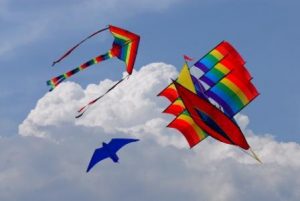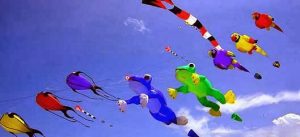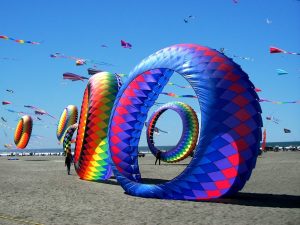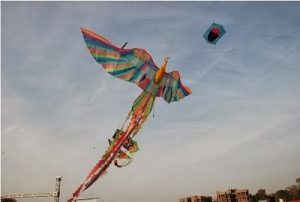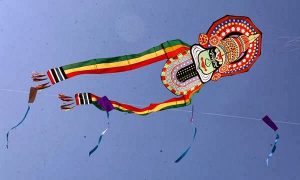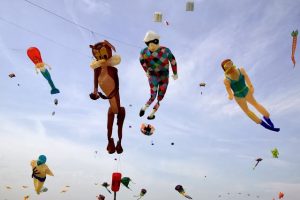The day on which sun enters the zodiac sign called Capricorn (Makara Rasi or Zodiac sign) is considered as an auspicious day. The period from Makarsankrant (the passage of the sun into the zodiac sign of Capricorn) to Karkasankrant is called the Uttarayan. In Sanskrit the word ‘Sankranti’ means transition. On this day sun begins its northward movement and the Hindu almanacs call this northward transition of the sun as Uttarayana patha. The day also coincides with the commencement of the Tamil month Thai. The day usually falls on 14th January every year. Of course this is the only festival that adapts solar (Hindu) calendar. The other festival dates are determined according to lunar calendar. It is believed that holy dip in perennial rivers like Ganga, Yamuna, and Kaveri will have huge significance. The Great Kumbh-Mela will be held once in every 12 years on this holy day at Prayag.
It is celebrated all over India as well as in few South East Asian Countries with different names. In Uttar Pradesh, Sankranti is celebrated with the name Khichiri’. In Himachal Pradesh and Punjab it is called Lohri. In Assam it is known as Bhogali Bihu. In West Bengal and Orissa it is simply celebrated as Makar Sankranti. It is still more simply called Sankranti in Bihar, Karnataka and Kerala. In Gujarat and Rajasthan the festival is named as Uttarayan. The festival is also celebrated with different names in different nations e.g., Nepal (Maghe sankranti), Thailand (Songkran), Laos (Pi Mao Lao) and Myanmar (Thingyan) (ref: Wikipedia)
The month Thai is considered as an auspicious month by Tamils. It is believed that dawn of the Tamil month Thai will mitigate all miseries. People will discard all old things and replace with new things. They will clean whitewash their house. They also decorate the house with kolams (Rangoli). They will purchase new dresses, jewelry and utensils. They will also prepare sweets. The farmers will offer fresh vegetables and fruits to their near and dear. The villages in Tamil Nadu also consider this as a communal festival. The temples will also get new facelift. Womenfolk decorate the temple premises with kolam, mango and coconut leaf festoons. The married daughters will receive harvested crops, vegetables, fruits, coconuts, utensils and money from their parents. Young girls decorate themselves with henna and share with friends and relatives. Women and young girls wear new clothes, wear golden and silver ornaments, volunteer.
The Sankranti or Pongal day is dedicated to Lord Sun, the savior of this world with His golden rays. In every household the pongal is cooked in the early morning at their front yard. Fresh earthen pots are fetched and decorated with kolam (drawing lines and curves with rice flour to beautify). For cooking they will use traditional wooden log flame. Fresh milk and water are allowed to boil and the froth will come out of the pot. It is believed as an auspicious sign. After this rice will be added and allowed to cook. Following this powdered jaggery and cardamom powder will be added. Now ghee will be added and the ingredients will be stirred well. At the end the dish will be decorated with ghee roasted cashew and raisin.
The third day of the Pongal festival is devoted to cows and bulls. The Hindus always worship cow as Gomatha. It is a merry making festival. The cows and bulls will be bathed in water. The horns are shaved and painted. The neck bells are tied. The forehead will have the sandal and kumkum. They will also prepare pongal. Offer prayer to god. They will feed the animal with pongal, plantain, greens etc.,
In South Tamil Nadu Jallikatu (Tamil Bull Fight) is a sport held on this day in prominent villages like Alanganallur and Thammampatti. This sport is considered as showing courage and valor. The raging bulls will be driven from an enclosure towards the youths. The youths are determined to tame the bull and take the prize money or gold from the neck strap of the cow. The wild animal will be frightened by the noisy music bands and will jump on the youths and try to escape from them. If the animal is disturbed or prevented, it will injure the youths. In most of the occasions people will get their stomach punctured by the sharp horns of the bulls. However the culture activists and village folks are supporting jallikatu. But animal sympathizers are against jallikatu. Year by year the issue is debated and the sports also held every year without fail.
Here…colorful Kites in shop shelves… 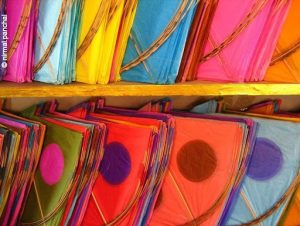
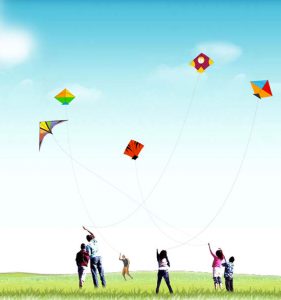
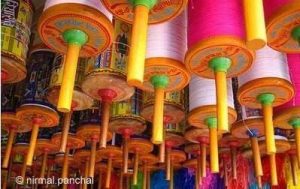
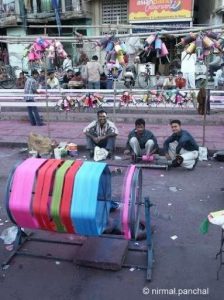
cute kid giving air to Kite, thats called ”Patang Apaay..” in Gujarati [patang = kite]

People on terrace…even before 14th Jan, practicing….
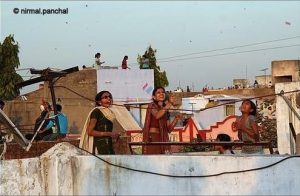
Malls and even small shops get into groove….look below
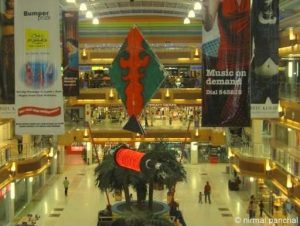
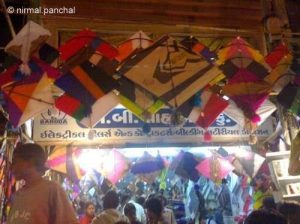
and whole day, kites color the sky….and in evening sky is……
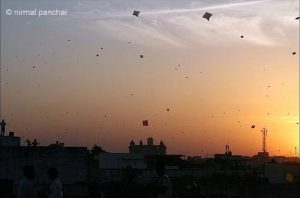
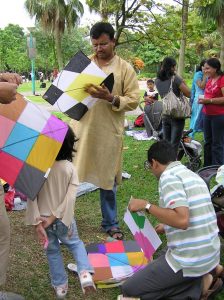
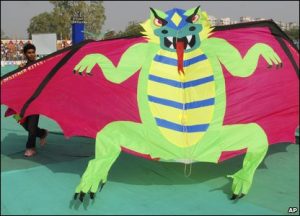
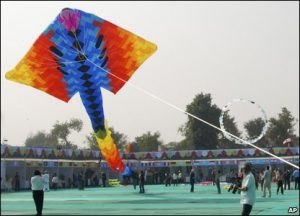
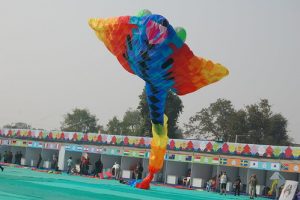
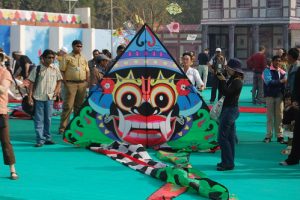
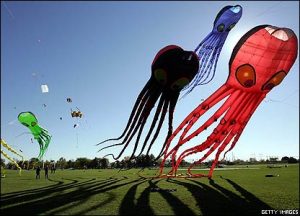
Bhogi is the first day of this harvest festival which is celebrated by throwing away and destroying old materials on fire thereby marking the end of the old and the emergence of the new.
Second day Jan 14 – Pongal
The second Pongal is the main day of the festival. It is celebreated by boiling rice with fresh milk and jaggery in new pots that are later topped with cashew nuts and sugar and allowing it to boil over the pot in the early morning. The moment the rice boils out of the pot, the tradition is to shout “Pongaloo pongal”. Sugar cane is bought and placed in every houses to symbolise the celebration of this great festival in Tamil Nadu.
Third day Jan 15 – Maattu Pongal
The final day “Kaanum pongal” is to thank the relatives and friends for their support. During this day people visit their friends and relatives to enjoy the pongal season.People flock together at beaches , parks and temples there by having a great day out.
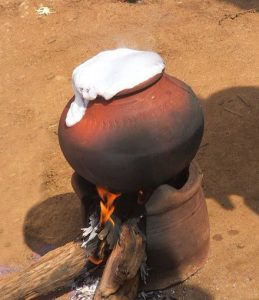 The third day known as ‘Mattu Pongal’ is dedicated to the cattle as cowherds and shepherds pay thanks to their cows and bulls, wash them, paint their horns and cover them with shining metal caps. They are fed ‘pongal’ and tinkling bells are tied around their neck. Cattle races are conducted and in the game called ‘Manji Virattu’ groups of young men chase running bulls. Bull fights called ‘Jallikattu’ are also arranged at some places where young men have to take the money bags tied to the horns of ferocious bulls single-handedly and without the use of arms.
The third day known as ‘Mattu Pongal’ is dedicated to the cattle as cowherds and shepherds pay thanks to their cows and bulls, wash them, paint their horns and cover them with shining metal caps. They are fed ‘pongal’ and tinkling bells are tied around their neck. Cattle races are conducted and in the game called ‘Manji Virattu’ groups of young men chase running bulls. Bull fights called ‘Jallikattu’ are also arranged at some places where young men have to take the money bags tied to the horns of ferocious bulls single-handedly and without the use of arms.
